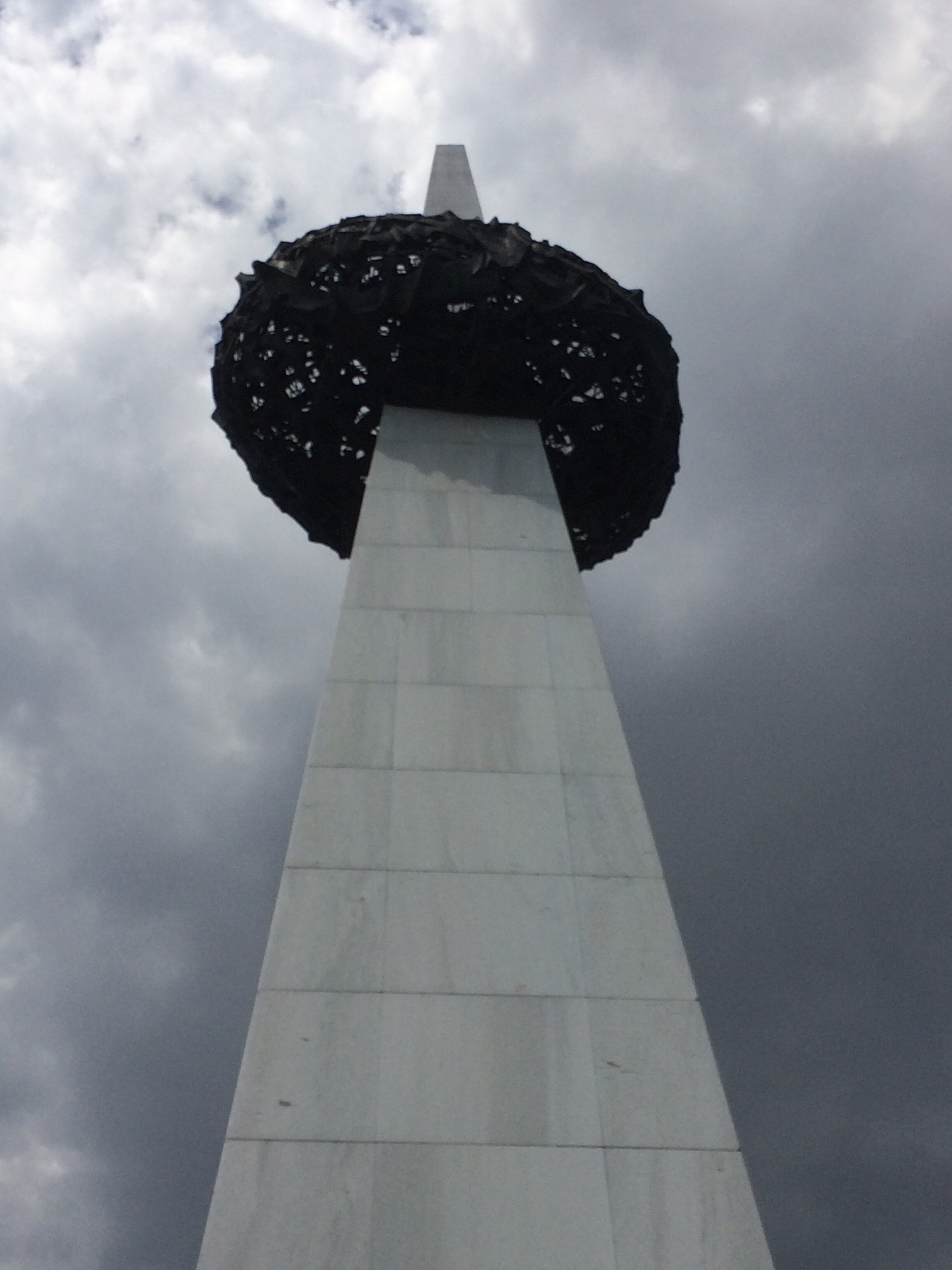Baffling Bucharest
On the plane home from Bucharest, I find myself struggling to come to a coherent set of thoughts on the museums that I encountered there. At times I was reminded of both Budapest and Tbilisi: the political slipperiness of some of the former's interpretation, and the lack of funding and infrastructure of the latter.
I should start by saying that we weren't able to visit everything that we had hoped. The renowned Muzeul National al Țăranului Romăn (Museum of the Romanian Peasant) was closed for renovation, and we missed both the Muzeul Național de Artă (National Art Museum) and Muzeul Municipal București (Bucharest History Museum), closed due to national holidays. The Muzeul Tăranului did have a nice small temporary exhibition that opened up the collection by putting together everything with the inventory number 111 (reminding me of Tim Etchell and Vlatka Horvat's show in Sheffield that I reviewed for Apollo in March).
The museums/heritage sites that we did visit largely divided into two types: those dealing with traditional Romanian (peasant) life, and those connected to recent political history. A high point was the Muzeul Satului (Village Museum), established in 1936 to bring together hundreds of dwellings, churches, barns, windmills, dance halls, inns and other structures from across Romania. Many are furnished and kitted out, either visible through the windows or where some doors are opened. It's a wonderful experience to walk around, and you get an intense sense of the largely unchanging rural life across much of Romanian history, tied unequivocably to the land.
Notable across heritage sites, though, the interpretation of these structures, as well as historic monuments marked by plaques across Bucharest, and sites of more recent political interest, was an emphasis on architecture over people. The English interpretation at least (I have no way of knowing if this differs from the Romanian), carefully listed construction techniques, details of material properties, and decorative styles, with very little focus on people stories. At the Muzeul Satului it was the furniture and fittings only which began to give you this sense.
At the Palatul Parlamentului (Palace of Parliament) and Casa Ceaușescu (home of the Ceaușescus), this tendency is even more striking. Respectively the final megalomaniac building project and long-term home of Nicolae and Elena Ceaușescu these are extraordinary buildings. Both are decorated in a range of rich and elaborate European styles - medieval, Renaissance, rococo - that emphasise expensive materials like gold leaf, marble and crystal. Impressively all materials used in both came from inside Romania. Yet, it is striking how these buildings inhabited or masterminded by this Communist dictator desperately evoke the atmosphere of historic European nobility.
More striking, in both buildings our tour guides focused on the materials, history of construction and 'fun facts' of the building, rather than its inhabitants/masterminds. Did you know that the Palatul Parlamentului is the heaviest administrative building in the world? Only at one point did we get a hint of the dark history of the Ceaușescu era, and the tension inherent in these buildings. In his specially-designed cinema room we heard how the family watched American movies, banned to the rest of the Romanian population, who only had access to two, carefully-controlled hours of television per day.
Sitting between these peasant and political histories, the Muzeul Național de Istorie â Romaniei (National History Museum) also has a noticeable gap. Exhibits deal with the classical Roman history of the region, with new archaeological finds, and a complete deconstructed cast of Trajan's column, and some of Romania's medieval and Royal history through its treasures. Others look at Romania in World War One, the history of the museum itself, and a small temporary display on 'unified Romania' from 1859. That's it. Nothing engages with the political history of the country from 1918 onwards, let alone anything significant between the Romans and WWI.
All in all, museums/heritage sites in Bucharest seem to shy away from people and politics, focusing on things and facts, styles and structures. You only begin to find these other stories reading between the lines.


































































































































































































